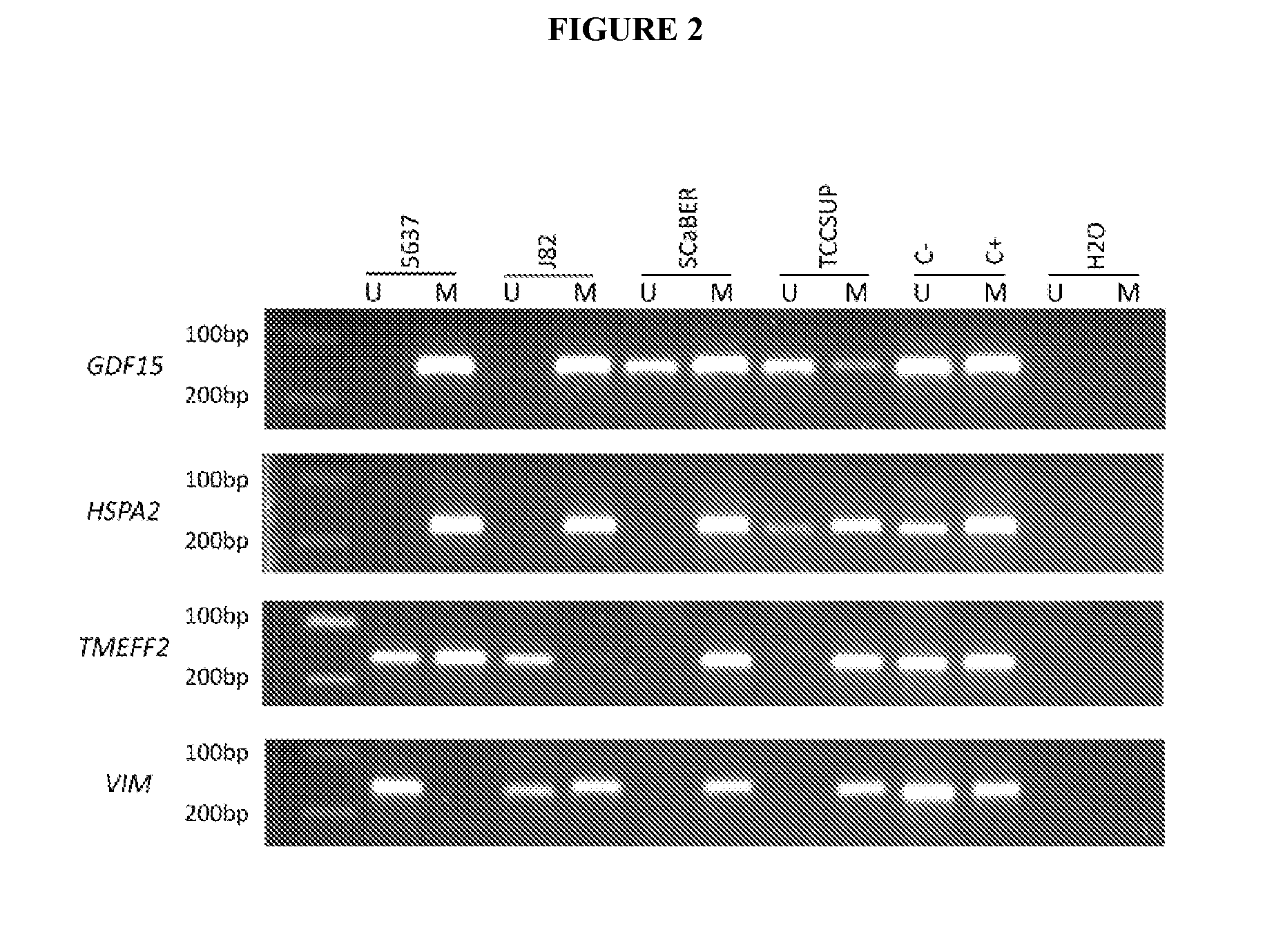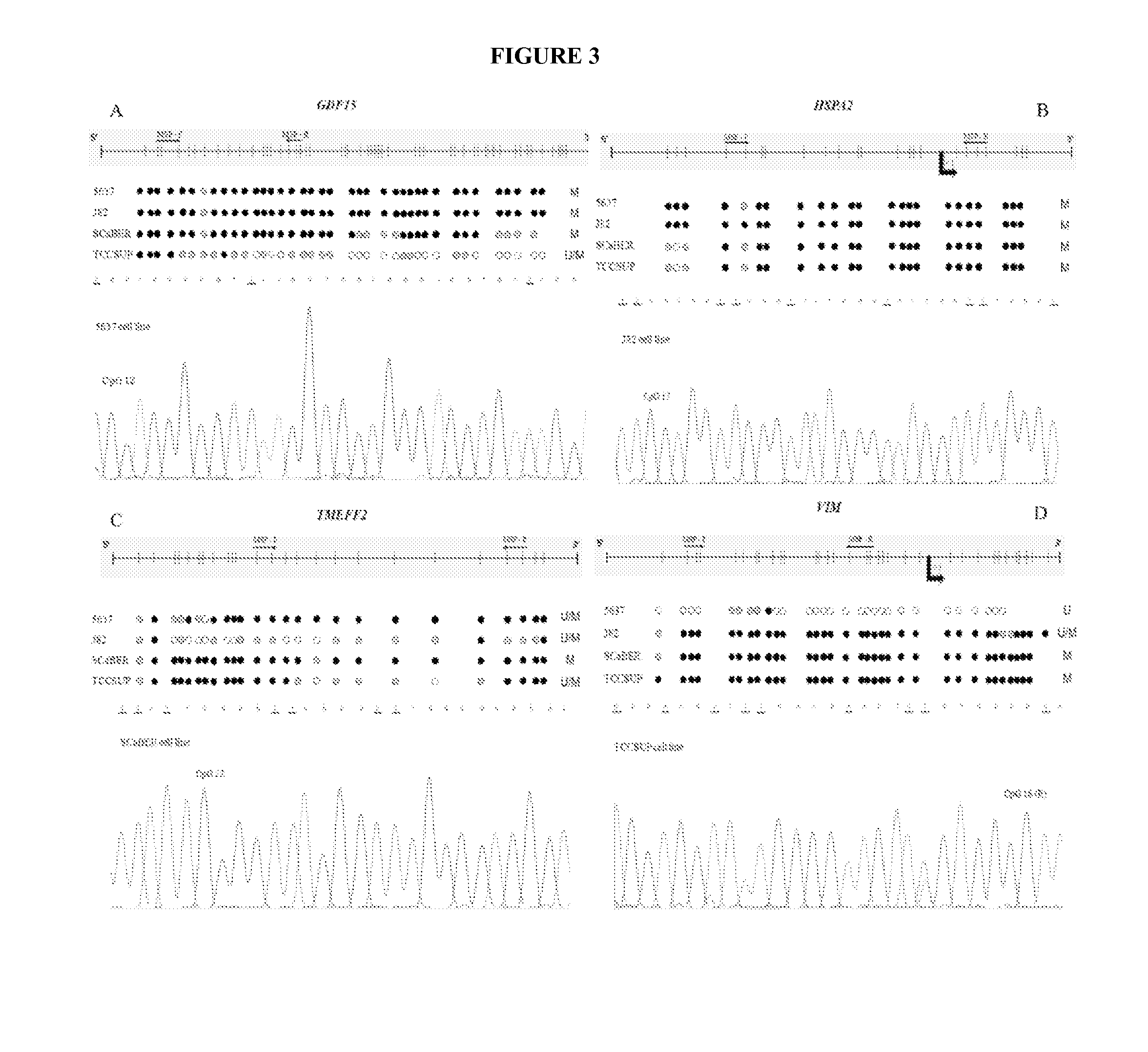Methods and biomarkers for detection of bladder cancer
a biomarker and bladder cancer technology, applied in the field of methods and biomarkers for bladder cancer detection, can solve the problems of unsuitable clinical use, low sensitivity of both methods, and inability to achieve the effect of high amplification efficiency, significant effect on efficiency and strength of hybridization
- Summary
- Abstract
- Description
- Claims
- Application Information
AI Technical Summary
Benefits of technology
Problems solved by technology
Method used
Image
Examples
example 1
Prediction of Bladder Cancer from DNA Isolated from Urine Samples Using GDF15, TMEFF2, and / or VIM as Epigenetic Biomarkers
[0089]Materials and Methods
[0090]A flow chart depicting the different steps followed in this study is provided in FIG. 1.
[0092]Cell lines representative of bladder (5637, J82, SCaBER, and TCCSUP), renal cell (786-0, ACHN, Caki-1, Caki-2) and prostate (22Rv1, DU 145, LNCaP, PC-3) cancer were obtained from the American Type Culture Collection (Manassas, Va.). All cell lines were cultured according to the manufacturer's specifications, with 10% fetal bovine serum (Gibco, Invitrogen, Carlsbad, Calif.) and antibiotics (100 units / mL penicillin G, and 100 μg / mL streptomycin, Gibco), in a humidified atmosphere of 5% CO2 at 37° C.
[0093]All BlCa cell lines were subjected to treatment with a combination of the demethylating drug 5-aza-2′deoxycytidine (1 μM for 72 h) and the histone deacetylase inhibitor trichostatin A (0.5 μM added the last 12 h). In ...
PUM
| Property | Measurement | Unit |
|---|---|---|
| volume | aaaaa | aaaaa |
| temperature | aaaaa | aaaaa |
| temperature | aaaaa | aaaaa |
Abstract
Description
Claims
Application Information
 Login to View More
Login to View More - R&D
- Intellectual Property
- Life Sciences
- Materials
- Tech Scout
- Unparalleled Data Quality
- Higher Quality Content
- 60% Fewer Hallucinations
Browse by: Latest US Patents, China's latest patents, Technical Efficacy Thesaurus, Application Domain, Technology Topic, Popular Technical Reports.
© 2025 PatSnap. All rights reserved.Legal|Privacy policy|Modern Slavery Act Transparency Statement|Sitemap|About US| Contact US: help@patsnap.com



